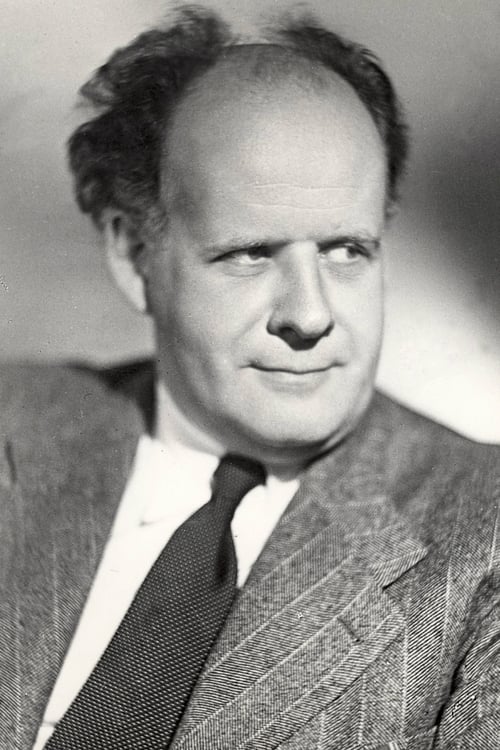
As a teenager, Sergei Eisenstein signed his drawings with "Sir Gay". Mark Rappaport sees clear signs of his sexual preferences throughout the Russian’s film oeuvre. Numerous asides illustrate how Hollywood productions likewise frequently played with nods and winks and typical motifs from gay culture.

The true story of Mei Lanfang, China's greatest opera star; a husband and father whose world-wide fame came from the portrayal of women. His fascinating life was the basis for the feature film Farewell My Concubine.

Eisenstein is celebrated either as the last Leonardo da Vinci of modernity or attacked as Faustus, Faustus who made a pact with the devil. Whichever is the case, neither friends nor foes are able to resist the powerful draw of Eisenstein's work. He was a person of complexity who was understood in very different ways, as a generous cosmopolitan and a stingy hermit, a cynic and yet a highly sensitive, vulnerable being. The film deals with a number of phases in Eisenstein's life, and tries to get away from the orthodox image of him by using new material to shed a different light on his biography.

Director
Eisenstein shot 50 hours of footage on location in Mexico in 1931 and 32 for what would have become ¡Que viva México!, but was not able to finish the film. Following two wildly different reconstruction attempts in 1939 (Marie Seton's 'Time in the Sun') and 1979 (Grigori Alexandrov's '¡Que viva México!') Kovalov has here compiled another hypothetical version of what Eisenstein's film might have been.

Writer
Eisenstein shot 50 hours of footage on location in Mexico in 1931 and 32 for what would have become ¡Que viva México!, but was not able to finish the film. Following two wildly different reconstruction attempts in 1939 (Marie Seton's 'Time in the Sun') and 1979 (Grigori Alexandrov's '¡Que viva México!') Kovalov has here compiled another hypothetical version of what Eisenstein's film might have been.

Himself
Eisenstein shot 50 hours of footage on location in Mexico in 1931 and 32 for what would have become ¡Que viva México!, but was not able to finish the film. Following two wildly different reconstruction attempts in 1939 (Marie Seton's 'Time in the Sun') and 1979 (Grigori Alexandrov's '¡Que viva México!') Kovalov has here compiled another hypothetical version of what Eisenstein's film might have been.

A free film adaptation of the director's memoirs. In form, this is the "stream of consciousness" that attracted Sergei Eisenstein after getting acquainted with the experiments of James Joyce. The outer outline of the film is a long foreign trip of the director, which began in 1929, during which he recalls his past life and considers creative ideas. The film is constructed as a free alternation of reality, dreams, and fantasies. The material for it is fragments from the films of Sergei Eisenstein and his fellow contemporaries, documentary footage depicting the director and his time. The wide coverage of the faces and events reflected in the film shows the special role of Sergei Eisenstein in the culture of the twentieth century…

The Island of the Dead is a film about the demise of the Russian Epocha Modern. The symbol of this culture was the legendary Russian film star Vera Kholodnaya, who evoked a poetic image of the young urban woman on the silver screen. Her death in 1919, shrouded in tragedy and mystery, put a symbolic end to the pre-Revolutionary period. The Island of the Dead is composed of fragments from numerous films from this period, juxtaposed with other contemporary artistic expressions such as music and painting. Kovalov shows convincingly how the fragile beauty of the Russian Epocha Modern had to make way for the pressure of Futurism, Constructivism and other 'progressive trends', and how these '-isms' were then also relegated to the melting pot to be remoulded by totalitarian norms.

Director
Begun in 1946, production was halted when the decision was made not to release the second film. After Eisenstein's death in 1948, all footage from the film was confiscated, but a 5 minute fragment exist.

Inspired by the social changes that the Revolution brought to our country and the admiration he felt for Mexican art, the Russian filmmaker Sergei M. Eisenstein traveled to Mexico with the intention of filming a film mosaic that culminated in the most beautiful non-existent film. The details of this odyssey are exposed in this episode of the classic television series Those Who Made Our Cinema.
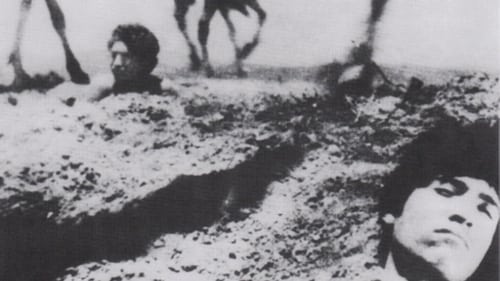
Director
¡Que viva México! was a film project undertaken in 1931-32 by Soviet film-maker Sergei Eisenstein for American socialist author Upton Sinclair and several investors, which Eisenstein eventually conceived as an episodic portrayal of Mexican culture and politics from pre-Conquest civilization to the Mexican revolution. Over 200,000 feet of silent film were shot before production had to be stopped due to exhaustion of finances and Stalin's demands that Eisenstein return to the USSR. This is one of several attempts to make a feature film out of the existing footage, here according to Eisenstein's skeletal outline and under the supervision of Gregori Alexandrov, Eisenstein's long-time collaborator, including on this project.

Screenplay
¡Que viva México! was a film project undertaken in 1931-32 by Soviet film-maker Sergei Eisenstein for American socialist author Upton Sinclair and several investors, which Eisenstein eventually conceived as an episodic portrayal of Mexican culture and politics from pre-Conquest civilization to the Mexican revolution. Over 200,000 feet of silent film were shot before production had to be stopped due to exhaustion of finances and Stalin's demands that Eisenstein return to the USSR. This is one of several attempts to make a feature film out of the existing footage, here according to Eisenstein's skeletal outline and under the supervision of Gregori Alexandrov, Eisenstein's long-time collaborator, including on this project.

Writer
Bezhin Lug (Bezhin Meadow) was to be a Soviet film about a young farm boy whose father attempts to betray the government for political reasons by sabotaging the year's harvest, and the son's efforts to stop his own father to protect the Soviet state, culminating in the boy's murder and a social uprising. Assigned to Soviet film-maker Sergei Eisenstein, the filming followed the same path as with his previous effort, "Que Viva Mexico", into cost overrun and over-shooting of footage. Furthermore, Eisenstein's usage of forbidden experimental film techniques outraged his government superiors, who ordered the film destroyed before it was even completed. All that survives are the first and last frames of each shot, preserved by Sergei Eisenstein’s wife, Pera Atasheva. The 1967 reconstruction, by Naum Kleiman of the Eisenstein Museum and Sergei Yutkevich of Gosfilmofond, places these frames in order, approximating the original film.

Director
Bezhin Lug (Bezhin Meadow) was to be a Soviet film about a young farm boy whose father attempts to betray the government for political reasons by sabotaging the year's harvest, and the son's efforts to stop his own father to protect the Soviet state, culminating in the boy's murder and a social uprising. Assigned to Soviet film-maker Sergei Eisenstein, the filming followed the same path as with his previous effort, "Que Viva Mexico", into cost overrun and over-shooting of footage. Furthermore, Eisenstein's usage of forbidden experimental film techniques outraged his government superiors, who ordered the film destroyed before it was even completed. All that survives are the first and last frames of each shot, preserved by Sergei Eisenstein’s wife, Pera Atasheva. The 1967 reconstruction, by Naum Kleiman of the Eisenstein Museum and Sergei Yutkevich of Gosfilmofond, places these frames in order, approximating the original film.
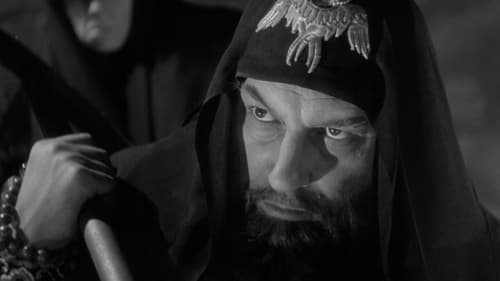
Production Design
러시아를 배반하고 폴란드로 투항한 이반 4세의 절친한 친구 쿠르프스키 공은 폴란드의 시그문트 왕에게 충성을 맹세한다. 시그문트 왕은 러시아에 강력한 통치자가 등장하는 것은 유럽 국가들을 위해 좋지 않은 일이며, 어떻게든 귀족들이 서로 권력을 나누어 갖게 됨으로써 러시아가 분열되는 것이 바람직하다고 생각한다. 한편 모스크바로 돌아온 황제 이반 4세는 그 동안 자기 대신 권력을 행사해 온 귀족들에 대해 노골적으로 적대적인 태도를 취한다. 그리고 자신의 가까운 친구이자 귀족들의 이익을 대변하고 있는 사제 필립과 국가의 통치 방식을 놓고 논쟁을 벌이다가 마침내 교회의 권위를 인정한다. 그러자 황제의 친위대원인 말류타는 황제에게 어느 누구도 믿지 말고 황제가 소유하고 있는 권력에만 의지하여 일을 수행해야 한다는 충고를 한다. 그러고는 황제를 위하여 자신의 손으로 저항하는 귀족들을 무참하게 살해한다. 그러자 이 처형 사건을 계기로 귀족들은 모스크바 대주교 필립을 앞세워 이반을 제거하려는 계획을 세우게 되는데...

Producer
러시아를 배반하고 폴란드로 투항한 이반 4세의 절친한 친구 쿠르프스키 공은 폴란드의 시그문트 왕에게 충성을 맹세한다. 시그문트 왕은 러시아에 강력한 통치자가 등장하는 것은 유럽 국가들을 위해 좋지 않은 일이며, 어떻게든 귀족들이 서로 권력을 나누어 갖게 됨으로써 러시아가 분열되는 것이 바람직하다고 생각한다. 한편 모스크바로 돌아온 황제 이반 4세는 그 동안 자기 대신 권력을 행사해 온 귀족들에 대해 노골적으로 적대적인 태도를 취한다. 그리고 자신의 가까운 친구이자 귀족들의 이익을 대변하고 있는 사제 필립과 국가의 통치 방식을 놓고 논쟁을 벌이다가 마침내 교회의 권위를 인정한다. 그러자 황제의 친위대원인 말류타는 황제에게 어느 누구도 믿지 말고 황제가 소유하고 있는 권력에만 의지하여 일을 수행해야 한다는 충고를 한다. 그러고는 황제를 위하여 자신의 손으로 저항하는 귀족들을 무참하게 살해한다. 그러자 이 처형 사건을 계기로 귀족들은 모스크바 대주교 필립을 앞세워 이반을 제거하려는 계획을 세우게 되는데...

Director
러시아를 배반하고 폴란드로 투항한 이반 4세의 절친한 친구 쿠르프스키 공은 폴란드의 시그문트 왕에게 충성을 맹세한다. 시그문트 왕은 러시아에 강력한 통치자가 등장하는 것은 유럽 국가들을 위해 좋지 않은 일이며, 어떻게든 귀족들이 서로 권력을 나누어 갖게 됨으로써 러시아가 분열되는 것이 바람직하다고 생각한다. 한편 모스크바로 돌아온 황제 이반 4세는 그 동안 자기 대신 권력을 행사해 온 귀족들에 대해 노골적으로 적대적인 태도를 취한다. 그리고 자신의 가까운 친구이자 귀족들의 이익을 대변하고 있는 사제 필립과 국가의 통치 방식을 놓고 논쟁을 벌이다가 마침내 교회의 권위를 인정한다. 그러자 황제의 친위대원인 말류타는 황제에게 어느 누구도 믿지 말고 황제가 소유하고 있는 권력에만 의지하여 일을 수행해야 한다는 충고를 한다. 그러고는 황제를 위하여 자신의 손으로 저항하는 귀족들을 무참하게 살해한다. 그러자 이 처형 사건을 계기로 귀족들은 모스크바 대주교 필립을 앞세워 이반을 제거하려는 계획을 세우게 되는데...

Writer
러시아를 배반하고 폴란드로 투항한 이반 4세의 절친한 친구 쿠르프스키 공은 폴란드의 시그문트 왕에게 충성을 맹세한다. 시그문트 왕은 러시아에 강력한 통치자가 등장하는 것은 유럽 국가들을 위해 좋지 않은 일이며, 어떻게든 귀족들이 서로 권력을 나누어 갖게 됨으로써 러시아가 분열되는 것이 바람직하다고 생각한다. 한편 모스크바로 돌아온 황제 이반 4세는 그 동안 자기 대신 권력을 행사해 온 귀족들에 대해 노골적으로 적대적인 태도를 취한다. 그리고 자신의 가까운 친구이자 귀족들의 이익을 대변하고 있는 사제 필립과 국가의 통치 방식을 놓고 논쟁을 벌이다가 마침내 교회의 권위를 인정한다. 그러자 황제의 친위대원인 말류타는 황제에게 어느 누구도 믿지 말고 황제가 소유하고 있는 권력에만 의지하여 일을 수행해야 한다는 충고를 한다. 그러고는 황제를 위하여 자신의 손으로 저항하는 귀족들을 무참하게 살해한다. 그러자 이 처형 사건을 계기로 귀족들은 모스크바 대주교 필립을 앞세워 이반을 제거하려는 계획을 세우게 되는데...

Himself (archive footage)
A USSR documentary about the filmmaker Sergei Eisenstein

Director
"Eisenstein journeyed to Mexico in late 1930 to begin shooting a film. With backing provided by Upton and Mary Craig Sinclair, the great Soviet auteur planned to make an epoch-spanning pageant of Mexico’s political history and cultural iconography, moving from the pre-Columbian era through colonization and, finally, revolution ... with the project running over budget the film was shut down. Sinclair eventually deposited the film materials at MoMA in 1953, at which point the scholar Jay Leyda assembled and annotated the shots, ordering them according to the filmmaker’s plans and presenting the images just as they had been shot, unedited ... here one is given the opportunity to attend to Eisenstein in an entirely different way, and aspects that might otherwise be overshadowed come to the fore: the way he works with nonprofessional actors, for example, or the striking mise-en-scène." - MoMA
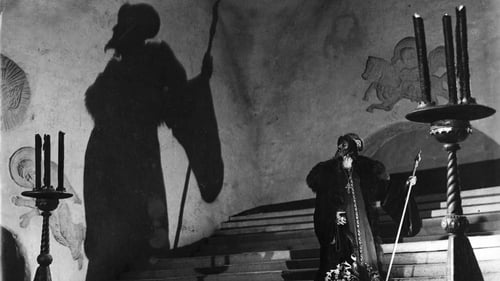
Art Direction
16세기 후반 여러 명의 공후들이 러시아 땅을 나누어 통치하고 있었다. 그 중에서 모스크바의 대공이었던 이반 4세는 자신이 분열된 영토를 이민족의 침입으로부터 보호하고 통일시키겠다는 야심에 찬 계획을 갖고 전 러시아의 황제로 취임한다. 귀족 출신의 아내 아나스타시야를 황후로 맞이한 이반은 취임 직후부터 경쟁 관계에 있는 귀족들의 반발에 부딪친다. 모스크바 시내 곳곳에 방화 사건이 발생하고 민심이 흉흉해진다. 한편 카잔 지방에 본거지를 둔 몽고의 칸은 모스크바가 자신들에게 복종할 것을 요구하고 전쟁을 벌인다. 이반 대제가 이끄는 러시아군은 이 전쟁에서 승리한다. 그러나 전쟁에서 승리한 후 모스크바로 귀환하는 도중 이반은 병에 걸려 중태에 빠지게 된다. 이반의 권력이 약화되기만을 기다리고 있던 귀족들은 이 기회를 이용하여 블라디미르 대공을 황제로 앉히려는 음모를 꾸미는데...

Editor
16세기 후반 여러 명의 공후들이 러시아 땅을 나누어 통치하고 있었다. 그 중에서 모스크바의 대공이었던 이반 4세는 자신이 분열된 영토를 이민족의 침입으로부터 보호하고 통일시키겠다는 야심에 찬 계획을 갖고 전 러시아의 황제로 취임한다. 귀족 출신의 아내 아나스타시야를 황후로 맞이한 이반은 취임 직후부터 경쟁 관계에 있는 귀족들의 반발에 부딪친다. 모스크바 시내 곳곳에 방화 사건이 발생하고 민심이 흉흉해진다. 한편 카잔 지방에 본거지를 둔 몽고의 칸은 모스크바가 자신들에게 복종할 것을 요구하고 전쟁을 벌인다. 이반 대제가 이끄는 러시아군은 이 전쟁에서 승리한다. 그러나 전쟁에서 승리한 후 모스크바로 귀환하는 도중 이반은 병에 걸려 중태에 빠지게 된다. 이반의 권력이 약화되기만을 기다리고 있던 귀족들은 이 기회를 이용하여 블라디미르 대공을 황제로 앉히려는 음모를 꾸미는데...

Producer
16세기 후반 여러 명의 공후들이 러시아 땅을 나누어 통치하고 있었다. 그 중에서 모스크바의 대공이었던 이반 4세는 자신이 분열된 영토를 이민족의 침입으로부터 보호하고 통일시키겠다는 야심에 찬 계획을 갖고 전 러시아의 황제로 취임한다. 귀족 출신의 아내 아나스타시야를 황후로 맞이한 이반은 취임 직후부터 경쟁 관계에 있는 귀족들의 반발에 부딪친다. 모스크바 시내 곳곳에 방화 사건이 발생하고 민심이 흉흉해진다. 한편 카잔 지방에 본거지를 둔 몽고의 칸은 모스크바가 자신들에게 복종할 것을 요구하고 전쟁을 벌인다. 이반 대제가 이끄는 러시아군은 이 전쟁에서 승리한다. 그러나 전쟁에서 승리한 후 모스크바로 귀환하는 도중 이반은 병에 걸려 중태에 빠지게 된다. 이반의 권력이 약화되기만을 기다리고 있던 귀족들은 이 기회를 이용하여 블라디미르 대공을 황제로 앉히려는 음모를 꾸미는데...

Director
16세기 후반 여러 명의 공후들이 러시아 땅을 나누어 통치하고 있었다. 그 중에서 모스크바의 대공이었던 이반 4세는 자신이 분열된 영토를 이민족의 침입으로부터 보호하고 통일시키겠다는 야심에 찬 계획을 갖고 전 러시아의 황제로 취임한다. 귀족 출신의 아내 아나스타시야를 황후로 맞이한 이반은 취임 직후부터 경쟁 관계에 있는 귀족들의 반발에 부딪친다. 모스크바 시내 곳곳에 방화 사건이 발생하고 민심이 흉흉해진다. 한편 카잔 지방에 본거지를 둔 몽고의 칸은 모스크바가 자신들에게 복종할 것을 요구하고 전쟁을 벌인다. 이반 대제가 이끄는 러시아군은 이 전쟁에서 승리한다. 그러나 전쟁에서 승리한 후 모스크바로 귀환하는 도중 이반은 병에 걸려 중태에 빠지게 된다. 이반의 권력이 약화되기만을 기다리고 있던 귀족들은 이 기회를 이용하여 블라디미르 대공을 황제로 앉히려는 음모를 꾸미는데...

Writer
16세기 후반 여러 명의 공후들이 러시아 땅을 나누어 통치하고 있었다. 그 중에서 모스크바의 대공이었던 이반 4세는 자신이 분열된 영토를 이민족의 침입으로부터 보호하고 통일시키겠다는 야심에 찬 계획을 갖고 전 러시아의 황제로 취임한다. 귀족 출신의 아내 아나스타시야를 황후로 맞이한 이반은 취임 직후부터 경쟁 관계에 있는 귀족들의 반발에 부딪친다. 모스크바 시내 곳곳에 방화 사건이 발생하고 민심이 흉흉해진다. 한편 카잔 지방에 본거지를 둔 몽고의 칸은 모스크바가 자신들에게 복종할 것을 요구하고 전쟁을 벌인다. 이반 대제가 이끄는 러시아군은 이 전쟁에서 승리한다. 그러나 전쟁에서 승리한 후 모스크바로 귀환하는 도중 이반은 병에 걸려 중태에 빠지게 된다. 이반의 권력이 약화되기만을 기다리고 있던 귀족들은 이 기회를 이용하여 블라디미르 대공을 황제로 앉히려는 음모를 꾸미는데...

Writer
Archive footage from Potemkin (1925), with English dialogue dubbed in by American actors, is combined with new footage to tie together the brave stand of Odessa Russian guerrilla bands of the 1940's against German forces with the similar situation of 1905 when Odessa citizens aided in the revolt against the Czar as depicted in Eisenstein's classic Potemkin (1925).

Director
Archive footage from Potemkin (1925), with English dialogue dubbed in by American actors, is combined with new footage to tie together the brave stand of Odessa Russian guerrilla bands of the 1940's against German forces with the similar situation of 1905 when Odessa citizens aided in the revolt against the Czar as depicted in Eisenstein's classic Potemkin (1925).

In 1941, a group of the Soviet Union's most prominent Jewish writers and artists, including Solomon Mikhoels, Peretz Markish, and Sergei Eisenstein, signed an appeal to Jews throughout the world, asking them to join the Soviet people in fighting against fascism.

Idea
Second attempt to create a feature film out of the 200,000-plus feet of film which Soviet film-maker Sergei Eisenstein shot during 1931-32 in Mexico for American socialist author Upton Sinclair, his wife and a small company of investors. The projected film, to be called "Que Viva Mexico", was never completed due to exhaustion of funds and Stalin's demand that Eisenstein return to the USSR (he had been absent since 1929). The first attempt at editing the footage, in the USA, resulted in "Thunder Over Mexico", released in 1934. In 1940, Marie Seton, from the UK, acquired some of the footage from the Sinclairs in an attempt to make a better cutting according to Eisenstein's skeletal outline for the proposed film. This film has apparently been lost.

Director
Second attempt to create a feature film out of the 200,000-plus feet of film which Soviet film-maker Sergei Eisenstein shot during 1931-32 in Mexico for American socialist author Upton Sinclair, his wife and a small company of investors. The projected film, to be called "Que Viva Mexico", was never completed due to exhaustion of funds and Stalin's demand that Eisenstein return to the USSR (he had been absent since 1929). The first attempt at editing the footage, in the USA, resulted in "Thunder Over Mexico", released in 1934. In 1940, Marie Seton, from the UK, acquired some of the footage from the Sinclairs in an attempt to make a better cutting according to Eisenstein's skeletal outline for the proposed film. This film has apparently been lost.

(archive footage)
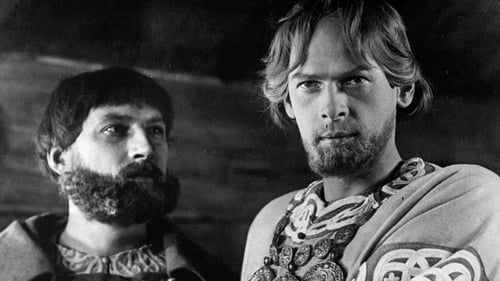
Writer
13세기 러시아에 실존했던 러시아의 민족 영웅 알렉산더 네브스키의 이야기. 니콜라이 체르카소프 등이 주연으로 출연하였다. 몽고와 게르만의 침략을 동시에 받고 있던 러시아의 상황에서 알렉산더 네브스키는 농민군을 조직, 침략자들과 전쟁을 벌인다.

Editor
13세기 러시아에 실존했던 러시아의 민족 영웅 알렉산더 네브스키의 이야기. 니콜라이 체르카소프 등이 주연으로 출연하였다. 몽고와 게르만의 침략을 동시에 받고 있던 러시아의 상황에서 알렉산더 네브스키는 농민군을 조직, 침략자들과 전쟁을 벌인다.

Director
13세기 러시아에 실존했던 러시아의 민족 영웅 알렉산더 네브스키의 이야기. 니콜라이 체르카소프 등이 주연으로 출연하였다. 몽고와 게르만의 침략을 동시에 받고 있던 러시아의 상황에서 알렉산더 네브스키는 농민군을 조직, 침략자들과 전쟁을 벌인다.

Director
During his adventure in Mexico, Sergei Eisenstein made footage of a Mexican "Death Day" celebration for inclusion in his "Que Viva Mexico!" film project. When the 200,000-plus feet of film he eventually exposed in Mexico was first attempted to be made into a feature film, "Thunder Over Mexico", the producers excluded the Death Day material for subsequent compilation as an independent short subject. Silent with music track and explanatory English intertitles.

Director
The story of Russian director Sergei M. Eisenstein in Mexico trying to film his unfinished ¡Que Viva Mexico! - Da zdravstvuyet Meksika! (1979).

Director
As was common in Diaz's Mexico, a young hacienda worker finds his betrothed imprisoned and his life threatened by his master for confronting a hacienda guest for raping the girl. This film is the first of several attempts to make a feature-length motion picture out of the 200,000-plus feet of film shot by Sergei Eisenstein, on photographic expedition in Mexico during 1931-32 for Upton Sinclair and a cadre of private American producer-investors. Silent with music and English intertitles.

Director
Unedited film that Sergei Eisenstein, Grigoriy Aleksandrov and Eduard Tisse shot in Mexico 1931-32. This record only represents the 200,000-plus feet of unedited film that Sergei Eisenstein, Grigoriy Aleksandrov and Eduard Tisse shot in Mexico 1931/32 for Mary and Upton Sinclair and three American co-financiers. It was Eisenstein's vision to end up with movie about Mexico in six parts called "Calavera", "Sandunga", "Maguey", "Fiesta", "Soldadera", and "Epilogue". The project was canceled before it was completed due to cost overruns and months-delayed completion, and the producers refused to let Eisenstein attempt to edit anything from the material he had finished after Iosif Stalin called him back to the USSR. From this footage the following pictures were subsequently edited by other hands: Thunder Over Mexico (1933), Eisenstein in Mexico (1933), Death Day (1934), Time in the Sun (1940), and Que Viva Mexico (1979).

Self (uncredited)
A German reporter visits Hollywood and is escorted through the MGM Studio by a German nobleman, who is working there as an extra. They meet and speak to several actors, primarily Buster Keaton, John Gilbert, Joan Crawford and Heinrich George. Then they meet Adolphe Menjou, who rehearses a long scene in German. A final scene shows stars arriving at a film premiere, including Jean Harlow, Norma Shearer and Wallace Beery.

Writer
Footage of the aftermath of the January 14 1931 earthquake in Oaxaca, Mexico.

Director
Footage of the aftermath of the January 14 1931 earthquake in Oaxaca, Mexico.

Editor
Romance sentimentale is a 1930 French film directed by Grigori Aleksandrov and Sergei M. Eisenstein. A short, experimental, slightly poetic montage of city and abstract images.

Screenplay
Romance sentimentale is a 1930 French film directed by Grigori Aleksandrov and Sergei M. Eisenstein. A short, experimental, slightly poetic montage of city and abstract images.

Director
Romance sentimentale is a 1930 French film directed by Grigori Aleksandrov and Sergei M. Eisenstein. A short, experimental, slightly poetic montage of city and abstract images.

Director
This film shows contrasting views of women with problematic pregnancies and the outcomes resulting when they seek out a back-alley abortionist, a trained and licensed abortion provider in a clinic, or an obstetrician capable of performing a Caesarian Section. The full film appears to be lost, but shortened versions, including one with dialogue scenes added in Germany in 1935, can be found on the internet. Additionally, Eisenstein's role in making the picture remains unclear: did he direct some or all of it, just edit it, or merely leave it to Alexandrov and Tisse to make? Released in the USA 1930 in a 65 minute (5800 ft.) version with English intertitles and a music track under the title BIRTH.

Supervisor of Production Resources
This film shows contrasting views of women with problematic pregnancies and the outcomes resulting when they seek out a back-alley abortionist, a trained and licensed abortion provider in a clinic, or an obstetrician capable of performing a Caesarian Section. The full film appears to be lost, but shortened versions, including one with dialogue scenes added in Germany in 1935, can be found on the internet. Additionally, Eisenstein's role in making the picture remains unclear: did he direct some or all of it, just edit it, or merely leave it to Alexandrov and Tisse to make? Released in the USA 1930 in a 65 minute (5800 ft.) version with English intertitles and a music track under the title BIRTH.

Editor
This film shows contrasting views of women with problematic pregnancies and the outcomes resulting when they seek out a back-alley abortionist, a trained and licensed abortion provider in a clinic, or an obstetrician capable of performing a Caesarian Section. The full film appears to be lost, but shortened versions, including one with dialogue scenes added in Germany in 1935, can be found on the internet. Additionally, Eisenstein's role in making the picture remains unclear: did he direct some or all of it, just edit it, or merely leave it to Alexandrov and Tisse to make? Released in the USA 1930 in a 65 minute (5800 ft.) version with English intertitles and a music track under the title BIRTH.
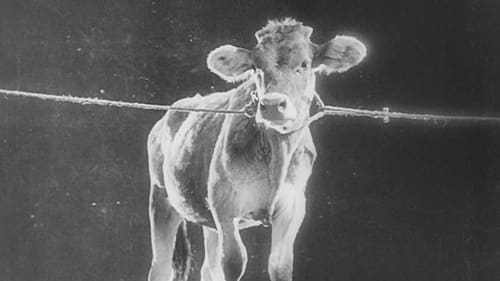
Scenario Writer
Also known as The Old and the New (Staroye i Novoye), The General Line illustrates Lenin’s stated imperative that the nation move from agrarian to industrial culture in an epic ode to farm-collectivization progress.

Director
Also known as The Old and the New (Staroye i Novoye), The General Line illustrates Lenin’s stated imperative that the nation move from agrarian to industrial culture in an epic ode to farm-collectivization progress.

Policeman
Experimental documentary focusing on a day in the life of city workers, featuring montage sequences and repetition to emphasise the monotony of routine office work.

Screenplay
A farcical war between the forces of Commercial Cinema and Independent Cinema.

Commander of the Army of Independents
A farcical war between the forces of Commercial Cinema and Independent Cinema.

Director
A farcical war between the forces of Commercial Cinema and Independent Cinema.

Director
Sergei M. Eisenstein's docu-drama about the 1917 October Revolution in Russia. Made ten years after the events and edited in Eisenstein's 'Soviet Montage' style, it re-enacts in celebratory terms several key scenes from the revolution.

Screenplay
Sergei M. Eisenstein's docu-drama about the 1917 October Revolution in Russia. Made ten years after the events and edited in Eisenstein's 'Soviet Montage' style, it re-enacts in celebratory terms several key scenes from the revolution.
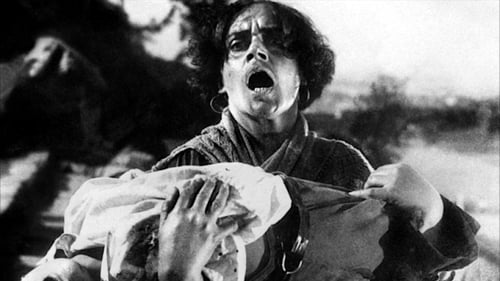
Writer
1905년, 제정 러시아 시대. 전함 포템킨의 수병들은 장교들의 학대와 열약한 근무 조건에 불만을 가지게 된다. 썩은 고기를 식량으로 사용한 사실은 그들의 반란의 기폭제로 작용한다. 수병을 없애버리라는 장교의 명령에 포병들은 거역하고 수병과 포병은 힘을 합쳐 동지가 된다. 전함을 완전히 장악한 이들은 승리감에 젖어 흑해 오뎃사 항구로 향하고 이 소식을 전해들은 시민들은 수병들을 환영하러 부두로 나온다. 한편 짜르의 명령을 받은 정예 코자크 군대가 출동하여 그들에 반항하는 시민들에게 무차별 공격을 가한다. 전함 포템킨에 탄 수병들을 환영하려 했던 시민들은 갑작스런 군대에 의해 피를 흘리며 쓰러져 간다. 수 많은 희생자가 나지만, 분노한 시민들은 수병들과 합세하여 봉기, 짜르의 군대와 싸우며 혁명의 대열에 서는데...

Odessa Citizen
1905년, 제정 러시아 시대. 전함 포템킨의 수병들은 장교들의 학대와 열약한 근무 조건에 불만을 가지게 된다. 썩은 고기를 식량으로 사용한 사실은 그들의 반란의 기폭제로 작용한다. 수병을 없애버리라는 장교의 명령에 포병들은 거역하고 수병과 포병은 힘을 합쳐 동지가 된다. 전함을 완전히 장악한 이들은 승리감에 젖어 흑해 오뎃사 항구로 향하고 이 소식을 전해들은 시민들은 수병들을 환영하러 부두로 나온다. 한편 짜르의 명령을 받은 정예 코자크 군대가 출동하여 그들에 반항하는 시민들에게 무차별 공격을 가한다. 전함 포템킨에 탄 수병들을 환영하려 했던 시민들은 갑작스런 군대에 의해 피를 흘리며 쓰러져 간다. 수 많은 희생자가 나지만, 분노한 시민들은 수병들과 합세하여 봉기, 짜르의 군대와 싸우며 혁명의 대열에 서는데...

Editor
1905년, 제정 러시아 시대. 전함 포템킨의 수병들은 장교들의 학대와 열약한 근무 조건에 불만을 가지게 된다. 썩은 고기를 식량으로 사용한 사실은 그들의 반란의 기폭제로 작용한다. 수병을 없애버리라는 장교의 명령에 포병들은 거역하고 수병과 포병은 힘을 합쳐 동지가 된다. 전함을 완전히 장악한 이들은 승리감에 젖어 흑해 오뎃사 항구로 향하고 이 소식을 전해들은 시민들은 수병들을 환영하러 부두로 나온다. 한편 짜르의 명령을 받은 정예 코자크 군대가 출동하여 그들에 반항하는 시민들에게 무차별 공격을 가한다. 전함 포템킨에 탄 수병들을 환영하려 했던 시민들은 갑작스런 군대에 의해 피를 흘리며 쓰러져 간다. 수 많은 희생자가 나지만, 분노한 시민들은 수병들과 합세하여 봉기, 짜르의 군대와 싸우며 혁명의 대열에 서는데...

Director
1905년, 제정 러시아 시대. 전함 포템킨의 수병들은 장교들의 학대와 열약한 근무 조건에 불만을 가지게 된다. 썩은 고기를 식량으로 사용한 사실은 그들의 반란의 기폭제로 작용한다. 수병을 없애버리라는 장교의 명령에 포병들은 거역하고 수병과 포병은 힘을 합쳐 동지가 된다. 전함을 완전히 장악한 이들은 승리감에 젖어 흑해 오뎃사 항구로 향하고 이 소식을 전해들은 시민들은 수병들을 환영하러 부두로 나온다. 한편 짜르의 명령을 받은 정예 코자크 군대가 출동하여 그들에 반항하는 시민들에게 무차별 공격을 가한다. 전함 포템킨에 탄 수병들을 환영하려 했던 시민들은 갑작스런 군대에 의해 피를 흘리며 쓰러져 간다. 수 많은 희생자가 나지만, 분노한 시민들은 수병들과 합세하여 봉기, 짜르의 군대와 싸우며 혁명의 대열에 서는데...
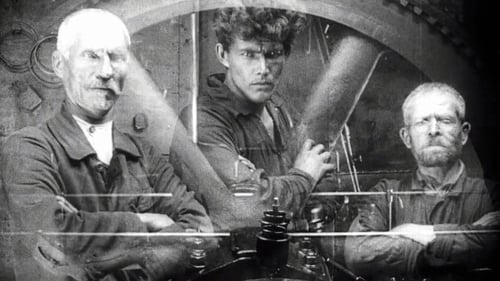
Editor
겉으로는 평온해 보이는 공장. 하지만 저 깊은 수면 아래에서 노동자들은 파업을 준비하고 있다. 파업의 기미를 보고받은 경찰은 스파이를 보내 노동자들을 염탐하게 한다. 그러던 어느날 측미계가 없어지자 공장 측은 한 노동자에게 누명을 씌우게 되고, 그는 자신의 결백함을 보이기 위해 자살하고 만다. 이 사건을 계기로 노동자들의 분노는 폭발하고 마침내 파업이 시작된다. 노동자들은 자신의 요구사항을 공장주에게 말하지만 그들은 수용하지 않는다. 파업이 장기화됨에 따라 극심한 생활고로 노동자들의 가정에서는 불화가 잦아질 뿐 아니라 가재 도구를 내다 팔기도 한다. 또한 스파이들의 회유와 협박에 넘어간 어느 노동자가 지도자를 밀고하기에 이른다. 경찰은 파업을 해결하기 위해서 부랑자들을 시켜 노동자들을 선동해 어용 주점을 방화, 약탈하도록 한다. 그들의 계획적인 음모를 눈치챈 노동자들은 집으로 돌아가려 하지만, 경찰들의 수공으로 심한 타격을 받고 활동가들과 지도자들은 모두 체포된다. 이 사건으로 권력을 가진 자들은 더욱더 철저하게 노동자들을 탄압할 수 있도록 군의 파견을 결정하고 잔혹한 진압을 자행하는데...

Screenplay
겉으로는 평온해 보이는 공장. 하지만 저 깊은 수면 아래에서 노동자들은 파업을 준비하고 있다. 파업의 기미를 보고받은 경찰은 스파이를 보내 노동자들을 염탐하게 한다. 그러던 어느날 측미계가 없어지자 공장 측은 한 노동자에게 누명을 씌우게 되고, 그는 자신의 결백함을 보이기 위해 자살하고 만다. 이 사건을 계기로 노동자들의 분노는 폭발하고 마침내 파업이 시작된다. 노동자들은 자신의 요구사항을 공장주에게 말하지만 그들은 수용하지 않는다. 파업이 장기화됨에 따라 극심한 생활고로 노동자들의 가정에서는 불화가 잦아질 뿐 아니라 가재 도구를 내다 팔기도 한다. 또한 스파이들의 회유와 협박에 넘어간 어느 노동자가 지도자를 밀고하기에 이른다. 경찰은 파업을 해결하기 위해서 부랑자들을 시켜 노동자들을 선동해 어용 주점을 방화, 약탈하도록 한다. 그들의 계획적인 음모를 눈치챈 노동자들은 집으로 돌아가려 하지만, 경찰들의 수공으로 심한 타격을 받고 활동가들과 지도자들은 모두 체포된다. 이 사건으로 권력을 가진 자들은 더욱더 철저하게 노동자들을 탄압할 수 있도록 군의 파견을 결정하고 잔혹한 진압을 자행하는데...

Director
겉으로는 평온해 보이는 공장. 하지만 저 깊은 수면 아래에서 노동자들은 파업을 준비하고 있다. 파업의 기미를 보고받은 경찰은 스파이를 보내 노동자들을 염탐하게 한다. 그러던 어느날 측미계가 없어지자 공장 측은 한 노동자에게 누명을 씌우게 되고, 그는 자신의 결백함을 보이기 위해 자살하고 만다. 이 사건을 계기로 노동자들의 분노는 폭발하고 마침내 파업이 시작된다. 노동자들은 자신의 요구사항을 공장주에게 말하지만 그들은 수용하지 않는다. 파업이 장기화됨에 따라 극심한 생활고로 노동자들의 가정에서는 불화가 잦아질 뿐 아니라 가재 도구를 내다 팔기도 한다. 또한 스파이들의 회유와 협박에 넘어간 어느 노동자가 지도자를 밀고하기에 이른다. 경찰은 파업을 해결하기 위해서 부랑자들을 시켜 노동자들을 선동해 어용 주점을 방화, 약탈하도록 한다. 그들의 계획적인 음모를 눈치챈 노동자들은 집으로 돌아가려 하지만, 경찰들의 수공으로 심한 타격을 받고 활동가들과 지도자들은 모두 체포된다. 이 사건으로 권력을 가진 자들은 더욱더 철저하게 노동자들을 탄압할 수 있도록 군의 파견을 결정하고 잔혹한 진압을 자행하는데...
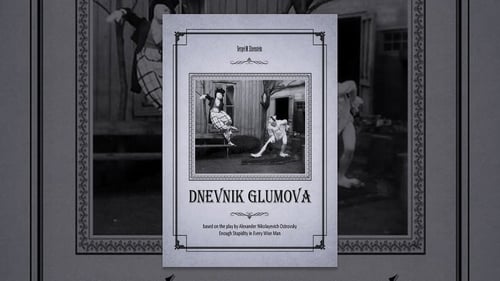
Himself (takes bow at end)
Filmic insert to Eisenstein's modernized, free adaptation of Ostrovskiy's 19th-century Russian stage play, "The Wise Man" ("Na vsyakogo mudretsa dovolno prostoty"). The anti-hero Glumov tries to escape exposure in the midst of acrobatics, derring-do, and farcical clowning. Several members of Eisenstein's troupe at the legendary "Proletkult" stage theatre in Moscow briefly appear in this little film.

Director
Filmic insert to Eisenstein's modernized, free adaptation of Ostrovskiy's 19th-century Russian stage play, "The Wise Man" ("Na vsyakogo mudretsa dovolno prostoty"). The anti-hero Glumov tries to escape exposure in the midst of acrobatics, derring-do, and farcical clowning. Several members of Eisenstein's troupe at the legendary "Proletkult" stage theatre in Moscow briefly appear in this little film.
